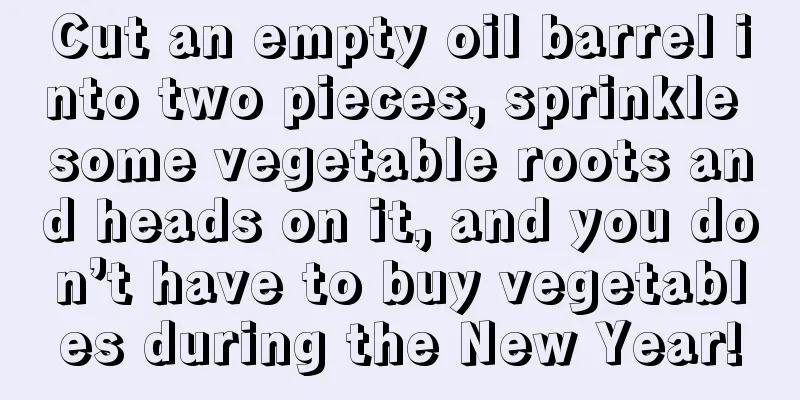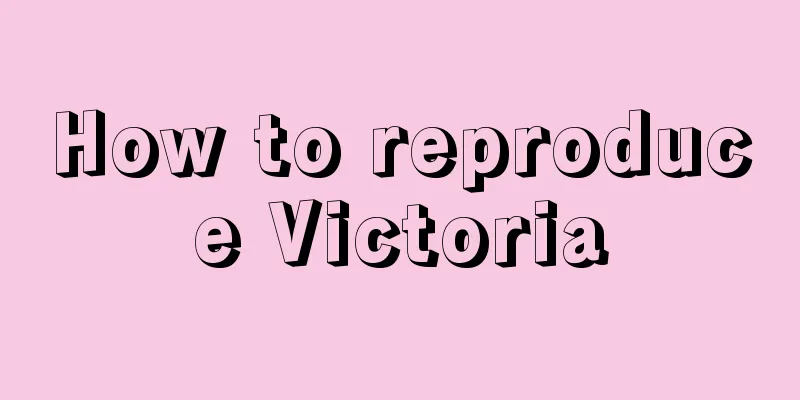Cut an empty oil barrel into two pieces, sprinkle some vegetable roots and heads on it, and you don’t have to buy vegetables during the New Year!

Cut an empty oil drum twice and it will instantly turn into a vegetable growing tool!Usually every home has empty oil drums, and it would be a waste to just throw them there. We can modify them a little bit and turn them into a simple vegetable growing device. You can throw the leftover vegetable roots and heads in it and pick them when they grow up and eat them whenever you want. It is convenient, simple and healthy! Specific operation method:1. Brush the empty oil barrel clean first. Oil barrels are not easy to clean, so you can put some sand in the barrel, add 1/4 of clean water into the barrel, screw on the lid, and shake it vigorously, so that the residue in the barrel will be wrapped together with the sand. 2. Pour out the sand and water, add clean water again, rinse the oil drum thoroughly, and then take it to a well-ventilated place to dry. 3. Use scissors or a knife to cut the oil barrel along the red line in the picture below. It does not need to be cut very neatly, but be sure to pay attention to safety and avoid scratches. 4. After cutting, you can put soil into the oil barrel. It is best to find the kind of fertile soil, which can be dug from the roadside. You can also add some fruit peels, vegetable leaves, nut shells, etc. to make it into fertile soil. 5. Then you can plant vegetables. This is cleaner and will not make the house smoky. It is also more convenient and takes up less space. When watering, just open the oil barrel and the water will not spill everywhere. Throw the water spinach roots into the oil barrel!Water spinach is a common green leafy vegetable. It is healthy and delicious. Huahua likes to eat stir-fried water spinach. If you throw the vegetable roots left over from cooking into an oil barrel, they will soon grow into a large patch. Specific operation method:1. When cooking normally, the water spinach leaves are eaten, but the roots and stems at the bottom are thrown away. In fact, you can plant the roots or stems of vegetables in oil drums, and they will be enough to eat if they grow any longer. 2. If it is the stem of water spinach, you can soak it in water first. It will grow roots in 4 or 5 days. After it takes root, you can plant it in an oil barrel. If it is the root of the vegetable, you can plant it directly in the soil. 3. After planting in the soil, seedlings will grow in 4 or 5 days. Spray the seedlings with water every day to keep them moist. Do not use too much water, otherwise the roots will easily rot. 4. Soon the water spinach seedlings will grow lush and green, and you can pick them as you eat them. After you finish eating one crop, another one will grow. Throw the coriander roots into the oil barrel!Coriander is a very unique side dish. People who like it can't live without it every day, but people who don't like it can't eat it at all. But coriander is still very nutritious, you can grow some at home. Specific operation method:1. When you eat coriander normally, collect the unwanted coriander roots and stems and plant them in the soil. They will grow back soon and you don’t need to buy coriander in the future. 2. Plant the coriander roots, compact the soil, and then water it thoroughly. Then put the coriander in a cool or well-ventilated place for a few days. Do not water it within 5 days. 3. Then place it on the balcony and water it frequently. Spray some water on the seedlings every 2 or 3 days. They will grow up in more than 20 days. You can just pick them when you cook. If you have an empty oil drum at home, It's time to take action~ Any questions? Welcome to leave a message for Huahua~ If you find this article useful Don’t forget to share it with your friends! Let more people know. |
<<: How to plant broad bean seeds
>>: A few mung beans, a kettle, and non-toxic mung bean sprouts will grow in 3 days!
Recommend
Feed the flowers some golden water, and they will be like taking stimulants, and they will bloom into big flower balls during the New Year!
Bury an egg yolk and flower buds will pop up! Dur...
How to care for succulents in winter? Can they be grown outdoors?
1. Increase the temperature 1. South: Succulents ...
Put a big hat on the flowers, and the flowers will pop out, and the balcony will burst in one month!
Clivia clip arrow If we talk about the flowers th...
How to trim the drum
1. Pruning method 1. Thinning: During the growth ...
Keeping water spinach at home is nutritious and has many benefits, and the key is that it is easy to grow
Water spinach is a vegetable that we often eat at...
How to propagate plum blossoms by cuttings
1. Cutting cuttings In order to ensure the surviv...
The leftover vegetable heads in the kitchen were buried in the soil and eaten one batch after another!
celery Celery can be said to be a must-have in th...
What is the reason why Clivia does not bloom and how to deal with it
1. The pot soil is not suitable 1. Reason: The in...
Sprinkle some "fertilizer king" in the soil, you don't have to spend money, and the flowers will grow rapidly!
Add some earthworm manure to the soil and the flo...
How to plant drug addict grass seeds
Introduction of drug addict grass seeds Generally...
Is Bougainvillea Pink Lady a hard-blooming plant? Characteristics and variety introduction of Pink Lady
Pink Lady Bougainvillea Flowering Picture The Bou...
How to make peach egg bloom, peach egg succulent pictures
1. How to make the pot explode 1. Suitable soil: ...
Why can't you grow jasmine at home?
1. Maintenance This plant can be grown indoors, b...
How to grow a fortune tree after cutting off a piece
1. Apply medicine to wound When raising it, somet...
The most complete water-soluble fertilizer formula ratio
Water-soluble fertilizer is a highly efficient an...









